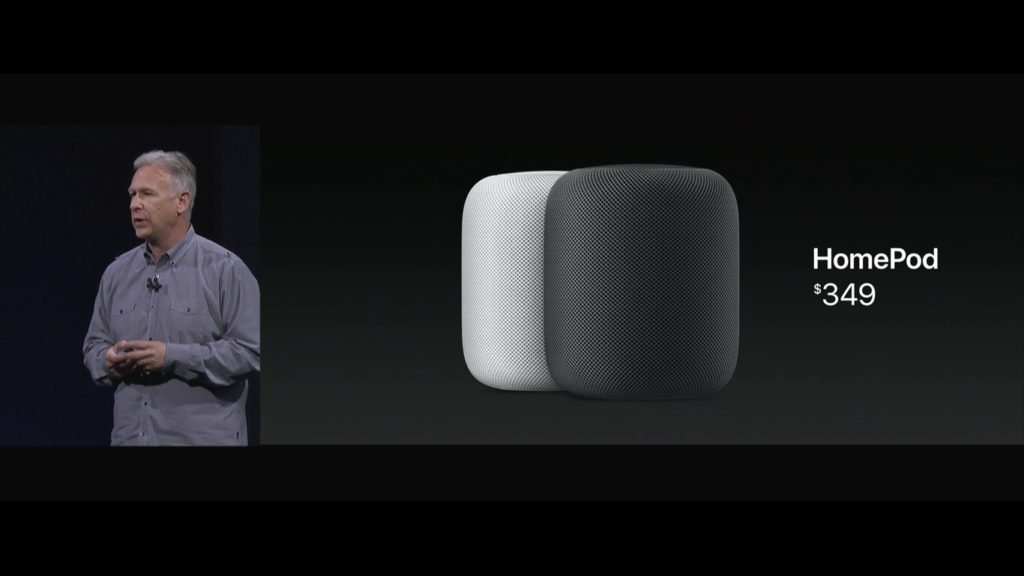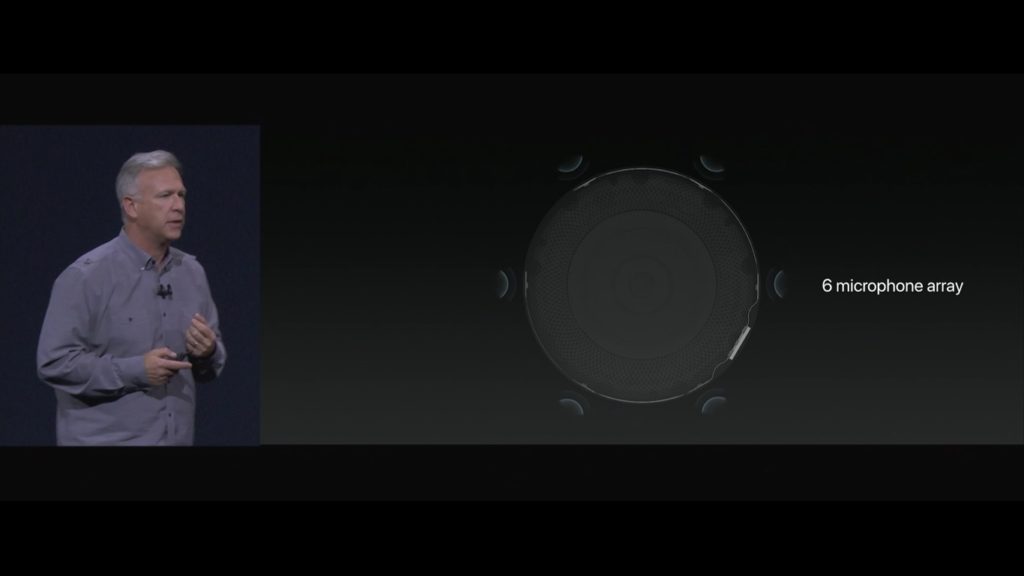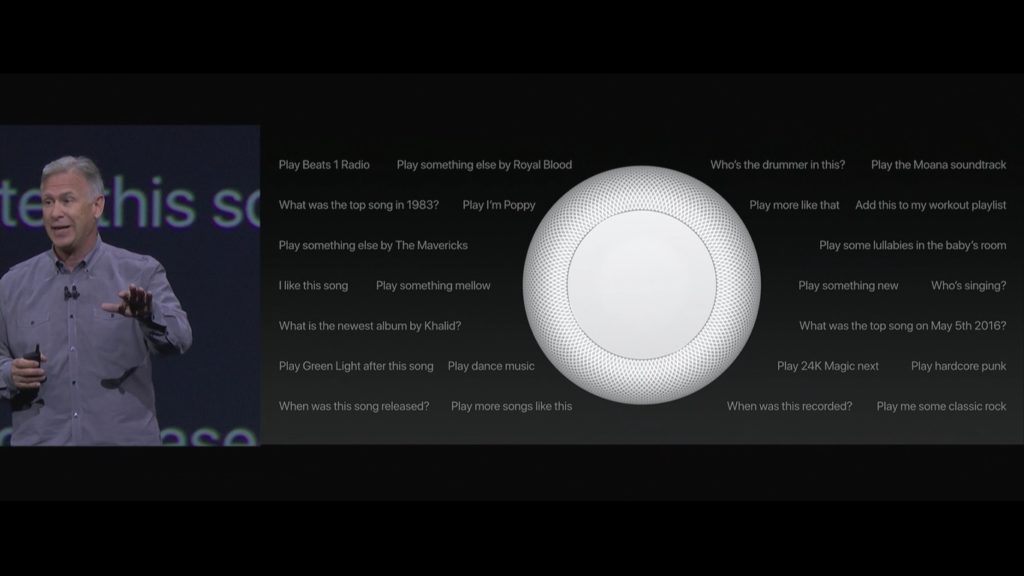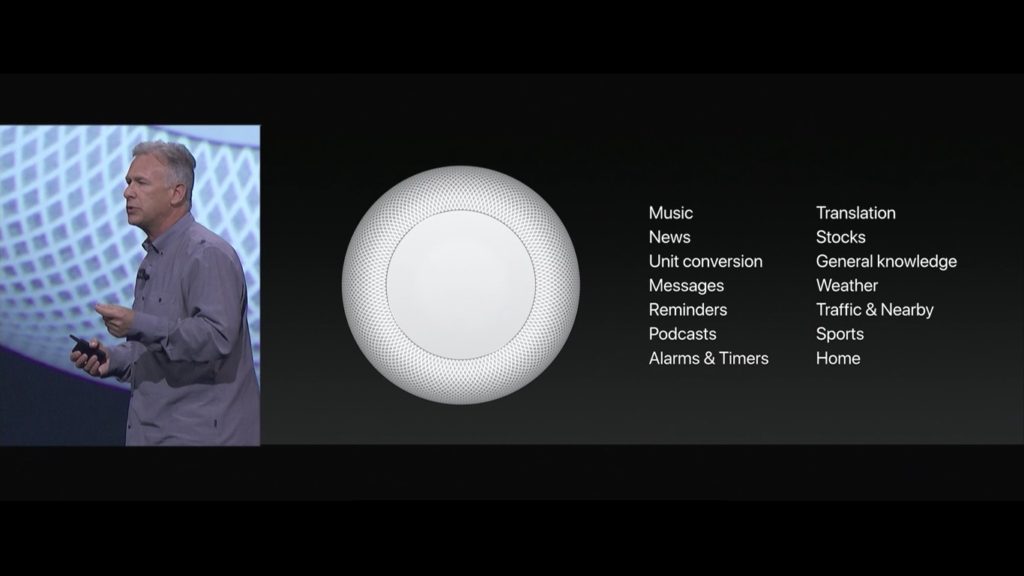
Apple HomePod
Apple had been long rumored to come up with its own Home Assistant. After all, with its competitors Amazon and Google occupying almost 94% of market share in the much promising Smart-Home system, how could Apple be left far behind? More so when the sensibilities of a smart-home device seem more aligned with Apple’s philosophies about a connected unified ecosystem than anyone else’s. And so, without much of a surprise but with much fanfare, we got Apple’s answer to its rivals: the HomePod.
Named similar to the iPod, the HomePod wants to revolutionize Home Music which is an area that Apple feels tech companies have not covered as well as they could’ve. Sure there are home music systems available as well as home assistants but never have the two been available in a same device, a gap which Apple points out it will now fulfill. Apple VP Phil Schiller expects a device of such caliber to be capable of three major functions:
Rock The House
With its short and stout cylindrical design, the HomePod has a base consisting of a 7 beam-forming tweeter array that allows for precise acoustic horns and directional control. It is also powered by Apple’s proprietary A8 chip which allows it to model sounds in real-time and also support multi-channel echo cancellation. In short, with these terms, Schiller explains the HomePod will truly rock the house.

The HomePod features a 6-microphone array
Spatial Awareness
The HomePod comes with the ability of being able to sense and effectively be aware of the scale of its environment so that it can use that to the maximum when bouncing sound around it. While an actual device wasn’t available for a demo, Schiller simulated what it would sound like in the auditorium with the vocals and music adjusting to take advantage of the available space.
Musicology
Finally, like the iPod, the HomePod will be able to store plenty of songs courtesy its tight integration with Apple Music. Also, with Siri on board, you’ll be able to summon the HomePod by calling Siri out using the familiar Hey Siri and ask it to play something in several of the many possible ways which Siri will understand using its new context-awareness.

The new Siri understands context in requests
Finally, almost as an afterthought, Schiller said that Siri would also be able to support a host of other functions on the HomePod, effectively making it a full-fledged home assistant. Some of the abilities for use include:
- Reading out the News
- Setting a reminder
- Asking General Knowledge Questions
- Checking on Weather, Traffic and Sports updates
- Messaging

The HomePod can do a lot more than just play music
That last one is a bit interesting since it implies at the HomePod being able to connect with the iPhone much like the Home connects with Google’s Pixel to expand its range of possible functionalities. Apple however seems more content on promoting the HomePod as a revolutionary music experience rather than a home assistant, to avoid possible clashes or comparisons with its rivals at least at this stage where it doesn’t have the HomePod fully ready yet.
The HomePod is expected to be available this fall with a price of $349. No word on the colors it will come in or what other versions of the Pod will there be, if at all any. To know what else was announced at the WWDC, read our coverage here.





